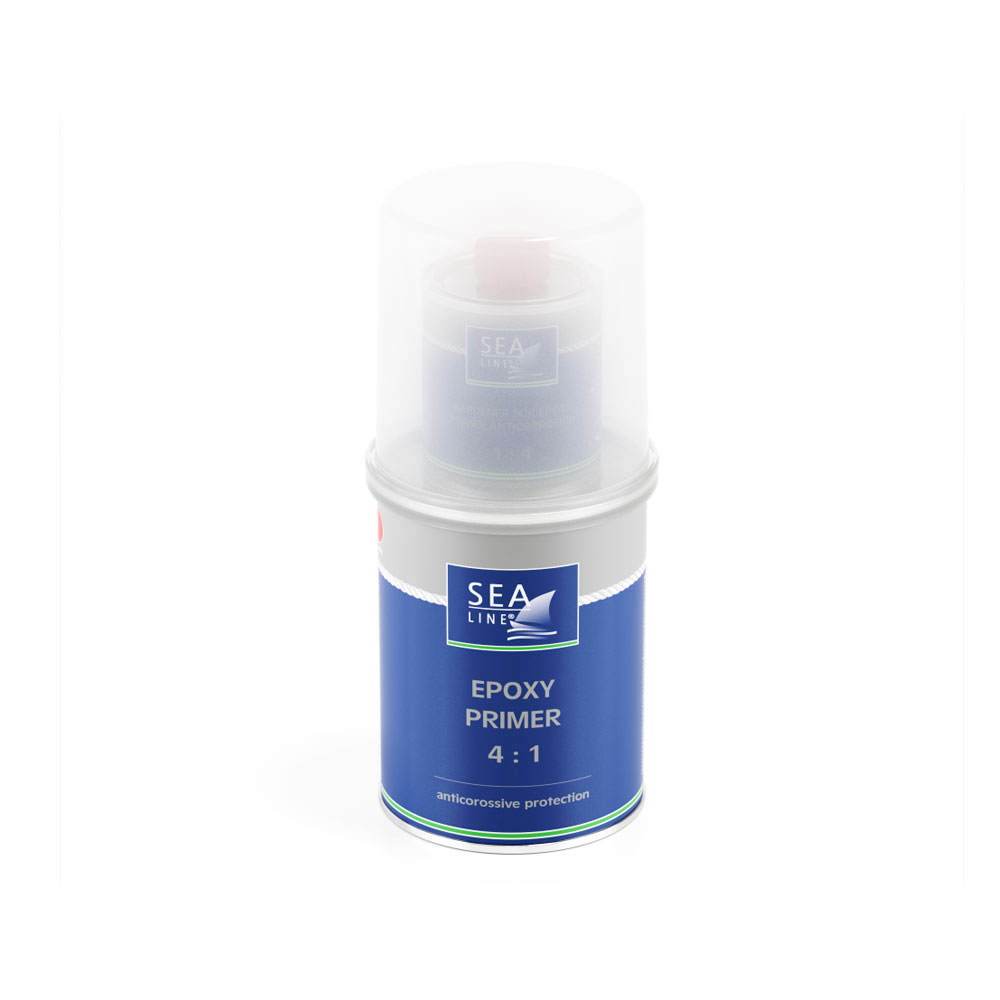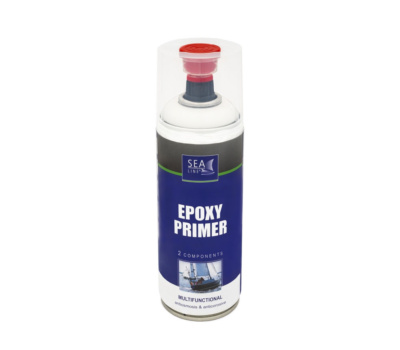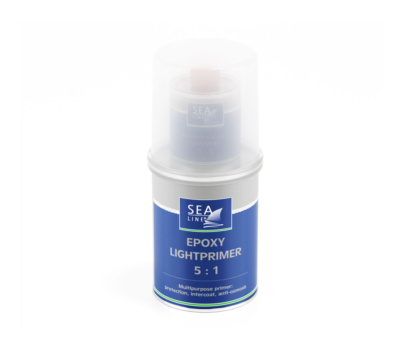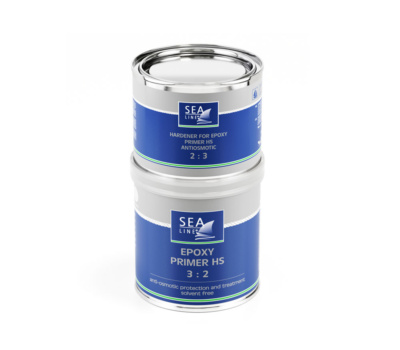We primarily recommend it for surface corrosion protection.
The 4:1 epoxy anti-corrosion primer can be used on all parts of yachts and boats made of steel, both above and below the waterline.
| Capacity | Code | |
|---|---|---|
| set (primer + hardener) | 750 ml | 5076 |
| primer | 6 l | 5145 |
| hardener | 1,5 l | 5147 |

| Type | Steel, aluminium |
| Place | Above and below waterline |
| Function | Grounding Intercoating Filling coat Anticorrosive |
| Application | brush, roll, spray gun |
| Thinning | Yes – thinner for epoxy system |
| Theoretical coverage For 1l | 11-12 m2 for 85 μm WFT/ 60 μm DFT |
| Number of coats | 2 – 3 |
| Pot life -20°C | 2 h |
| Time between layers without sanding | 4 h – 5 days |

The offered EPOXY PRIMER SPRAY 2K is a 2-component epoxy primer with multifunctional applications. This

This is a multifunctional paint that protects, enhances adhesion, and also protects against osmosis. Lightprimer

This particular product is recommended for protecting the laminate below the waterline, especially for repairing
Yes, you can mix Sea-Line polyurethane paints. The only difference are the pigments of polyurethane paints that determine the color of the paint. But remember to keep the right proportions of base, hardener and thinner.
We do not recommend using universal thinners. The use of a thinner with an unknown composition may result in loss of adhesion, lack of proper flow of paint and varnish defects.